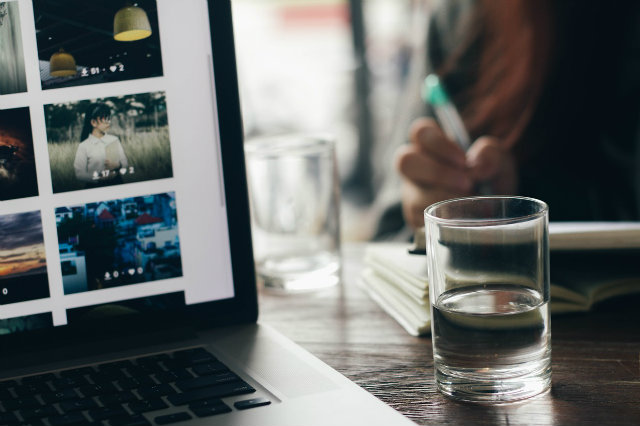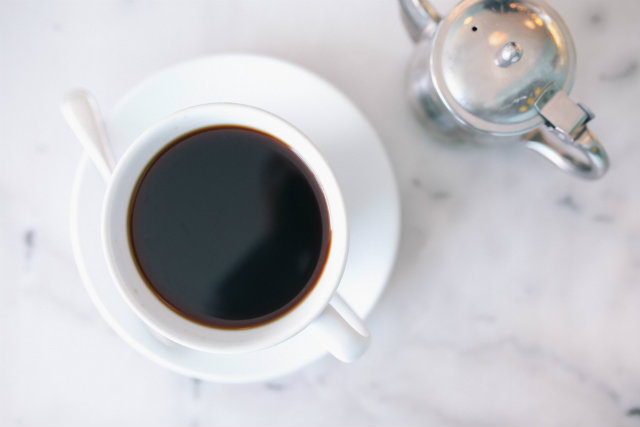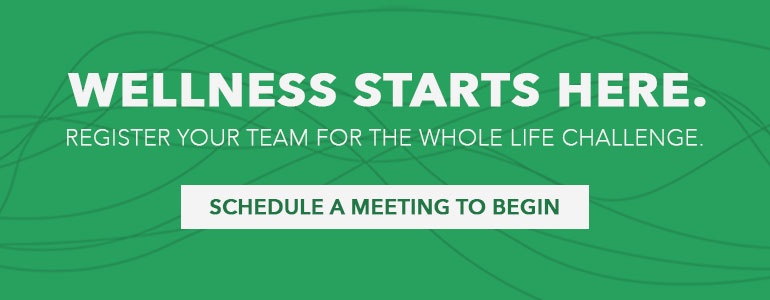In the workplace, a healthy team is a happy team. And as a leader, you set the example.
So when it comes to stocking your kitchen or break room, it’s your job to choose hydrating and healthy beverages for your employees.
With that being said — and let’s just get it this out of the way right now — we all know that water is the healthiest drink. Unfortunately, telling your employees that you’ll be providing free water probably won’t go over so well.
No worries — we can help you do better.
Not only are there some fun ways to spruce up water, but there are other healthy beverages you can offer to keep your staff happy and hydrated.
The Best Healthy Beverages for Your Workplace

1. Water
The human body is made of up to 60 percent water , so it only stands to reason that we’ve got to replenish that supply on a regular basis. Furthermore, being dehydrated causes all sorts of problems — from headaches and muscle aches to sleepiness and irritability.
And it’s easier than you think to be dehydrated. Experts recommend drinking about eight 8-ounce glasses of water per day, and most people drink far less than that. Why would we neglect our bodies like that?
Well, water is pretty boring — especially when it’s flat and from the tap. Which is why if you want your employees to get excited about it, you’ve got to add some flair. Here are some ideas:
Carbonate it.
Many people like soda because of the bubbles, so why not let sparkling water fill that role? Carbonated water is available in cans, or you can purchase a water carbonator like a SodaStream.
Just make sure when you buy sparkling water from the store that you read the labels. You’ll want zero artificial sweeteners, zero calories, and zero (or low) sodium. La Croix checks off all these boxes. Perrier, San Pellegrino, and Canada Dry sparkling water are pretty good, too. You might also look for store-brand sparkling waters that are usually less expensive than brand names.
Again, just read the labels. It’s easy to be duped into buying sparkling waters that are full of unhealthy artificial sweeteners. Artificial sweeteners are associated with diabetes and heart disease, and some may even be addictive.
Have ice available.
Lukewarm water is pretty bland, so simply having ice available in your office freezer can go a long way. A cold glass of sparkling water with ice is a deliciously refreshing drink to have at your side while working.
 Get some fruit in the mix.
Get some fruit in the mix.
There’s a lot to be said for a drink that looks pretty, and that’s what the addition of fruit does — along with adding some all-natural flavor. So if you want to jazz up your office water even more, here are some fruity ideas:
- Lemons: This is the standard addition, right? Simply buy a few lemons, wash them, and cut them into wedges. Pop these in a glass container with a top and put them in the fridge. While you’re at it, limes and orange wedges are also pretty and tasty when added to water.
- Berries in Ice: We said ice was a nice addition to a glass of water, but why not fancy it up even more? Simply fill an ice cube tray with water, then add a few freshly washed berries to each cube: sliced strawberries, blueberries, raspberries, or blackberries. These will freeze inside the ice cubes and make beautiful additions to any glass of water.
- Pomegranates: Pomegranate seeds sink, which means adding them to your water is great because they look gorgeous, and when you’re done drinking, you’ll have a few spoonfuls of tasty seeds waiting for you at the bottom. Have a bowl of seeds in your fridge for employees to add to their water if they choose.
Let people drink out of actual glasses.
Buying glasses for your office isn’t too expensive — unless you oddly have a lot of accident-prone employees. And the look of water in an actual glass with ice and fruit is much more appealing than the idea of lukewarm water in a plastic cup.
2. Coffee
Coffee’s a great drink for cold climates and for giving an extra boost of caffeine in the morning (or afternoon). But the verdict’s out on whether coffee is actually as good for you as, say, green tea. Even so, there is more research to support that coffee has more positive than negative health effects.
And anyway, it’s coffee. Most people drink it. In fact, humans have been drinking it for hundreds of years since a goat herder discovered it in Ethiopia. So you’ll probably have it in your kitchen.
The healthiest way to serve coffee is just black. But of course, not everyone enjoys that. So having heavy cream available to cut the acidity and bitterness of straight black coffee is a good idea. Alternatively, grass-fed butter can be a great coffee addition. It mimics the creaminess of heavy cream but has zero carbs. Plus, the added fat can help curb those mid-day hunger cravings.
If you need a sweetener, go for something like stevia, monk fruit, honey, or coconut sugar, but not refined white sugar. Stevia in particular is an excellent sweetener that comes naturally from the Stevia rebaudiana plant in South America.
3. Tea
Like coffee, tea can also give you a little jolt of energy if it’s caffeinated. And most teas are quite good for you. Notably, green tea has numerous proven health effects. It is linked with cancer and heart disease prevention, provides essential antioxidants, and has been known to help with arthritis general inflammation as well.
 4. Healthy Juices
4. Healthy Juices
Finally, even though most store-bought juices are basically liquid candy (more on that later), there are some juices that can be healthy. It’s just a matter of finding them.
One idea is tomato juice or other vegetable juices. These drinks pack a lot of nutrients into small cans and are the best alternative to sugary, store-bought juices. Unsweetened cranberry juice and pomegranate juice come in at a close second.
The Beverages to Avoid
Alright, if there was still any doubt left as to what constitutes unhealthy beverages, let’s go over those you should avoid.
1. Soda/Pop
This goes for fully-loaded (regular) and diet sodas. We’ve already stated that artificial sweeteners were bad. Now, let’s focus on regular soda or pop. Coca Cola, Mountain Dew, Sprite, root beer, and others are loaded with — you guessed it — sugar.
There is absolutely no health benefit to consuming sugar, and it’s been linked with numerous chronic diseases. Furthermore, sugar has a bad reputation for making people tired and sluggish — not what you want in your workplace.
2. Juice
Juice sounds healthy, right? But juice from the store can be just as bad as soda. Even those that say “all-natural.” That’s because they have lots of sugar, too.
So why is eating an orange okay, but it’s not healthy to drink orange juice? Because when you eat an orange, you’re getting those natural sugars paired with fiber, and that fiber slows down the digestion of sugars. But in the making of juice, that fiber is discarded so you’re hit with a big sugar spike. In addition, many store-bought juices also include high fructose corn syrup, which can lead to metabolic syndrome and increase your risk for diabetes.
3. Energy Drinks
Energy drinks are not only sugar-laden, but they’re also dangerous. In South Carolina, a sixteen-year-old boy died from an arrhythmia that doctors attributed to too much caffeine. According to the boy’s friends, he had consumed a cafe latte, a large Mountain Dew, and a sixteen-ounce energy drink in the span of just two hours. Naturally, this is too much caffeine for one individual. But doctors agreed the energy drink is what put him over the edge and caused the arrhythmia.
Most energy drinks contain high levels of caffeine, B vitamins, and taurine (an antioxidant that may help improve mental and physical performance). Our bodies weren’t built to handle this many stimulants, and drinking energy drinks has been continually associated with cardiovascular events. In addition, energy drinks are typically chock full of artificial ingredients, as well.
4. Non-Dairy Creamers
Non-dairy creamers are usually laden with artificial sweeteners, high fructose corn syrup, or refined sugar. All of these are bad for you. Stick with heavy cream if you can tolerate dairy or try grass-fed butter as your “creamer,” and opt natural sweeteners like stevia, honey, and coconut sugar.
 Setting the Example with Healthy Beverages
Setting the Example with Healthy Beverages
One of the things that leaders like you have likely learned as you’ve succeeded in life is that there are no shortcuts. And silly as it may sound, that’s the way with beverages too.
Soda, juices, energy drinks, and other highly sweetened drinks are shortcuts for feeling good. You get that great sugar high and you feel awesome — for about thirty seconds. Their desired shortcut is obvious: the dream of getting more done in the same amount of time.
But shortcuts and patch jobs don’t cut it, and they certainly don’t contribute to healthy nutrition. Maybe water tastes a little bland after you’ve sampled the insane sugariness of a Mountain Dew, but in the long run, water will help you stay hydrated. And hydration means feeling better, which in turn means avoiding headaches, bad moods, and falling asleep when you’re supposed to be working.
Water is the long game and so are the other healthy beverages on this list. Provide your employees with these quality choices, and ultimately, these beverages will help you cultivate a healthier, happier environment for your business.







